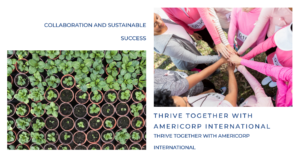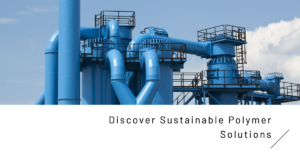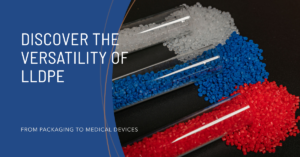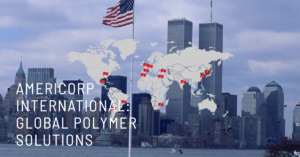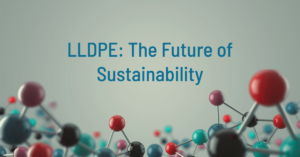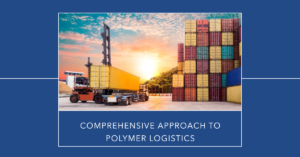1. Introduction
Plastics have become an integral part of our everyday lives and the industry at large. They offer a wide range of applications and benefits. One such plastic that stands out is Polyvinyl Chloride, commonly known as PVC. PVC is renowned for its durability, chemical resistance, and versatility, making it a preferred choice in various sectors including homes, industries, and healthcare.
1.1 Brief Introduction to PVC (Polyvinyl Chloride)
PVC, short for Polyvinyl Chloride, is a popular type of plastic that finds extensive use across industries. Its flexibility, durability, and cost-effectiveness make it highly desirable. PVC is synthesized through the polymerization of vinyl chloride monomer (VCM), which is a toxic and carcinogenic gas.
1.2 A Glance at the Extensive Applications of PVC
PVC’s versatility is evident from its wide array of applications. It is used in numerous industries, thanks to its desirable properties and adaptability. Let’s take a closer look at some of the key applications of PVC:
- Pipes: PVC pipes are commonly used for water supply and drainage systems due to their corrosion resistance and long lifespan.
- Siding: PVC siding offers excellent weather resistance, low maintenance, and aesthetic appeal, making it a popular choice in construction.
- Healthcare: PVC is utilized in medical settings for applications such as tubing, blood bags, and intravenous (IV) bags due to its flexibility and biocompatibility.
- Construction: PVC is widely used in the construction industry for window frames, roofing materials, and flooring due to its durability and cost-effectiveness.
- Automotive: PVC finds application in the automotive sector for cable sheathing, underbody protection, and various electrical components.
- Electrical Engineering: PVC is used for insulators, cable conduits, and other electrical components due to its electrical insulation properties.
These are just a few examples of PVC’s extensive applications, showcasing its versatility in various industries.
2. A Deep Dive into PVC
2.1 The PVC Phenomenon: What is PVC?
PVC is classified as a thermoplastic, which means it can be melted down and remolded multiple times without losing its essential properties. This unique characteristic makes PVC an ideal candidate for recycling, underscoring its potential as a sustainable choice in the long run. Thermoplastics have become increasingly popular due to their ability to be reshaped and reused, reducing waste and promoting circular economy principles.
2.2 PVC’s Chemical Structure and Properties
Understanding the chemical structure and properties of PVC is crucial in comprehending its characteristics and applications. PVC consists of a carbon backbone with chlorine atoms attached. This unique molecular structure imparts key properties to PVC, such as strength, flame resistance, and chemical stability. These properties make it suitable for a wide range of applications where durability and resistance to external factors are important.
2.3 An Understanding of “PVC 0.007 Plasticized”
To enhance its flexibility, PVC can be plasticized by adding plasticizers. “PVC 0.007 Plasticized” refers to a highly plasticized PVC variant that offers exceptional flexibility. This particular formulation is well-suited for applications such as electrical cable insulation, inflatables, and flooring. The addition of plasticizers allows PVC to be customized for specific applications, expanding its potential uses.
2.4 Decoding PVC S1000
PVC S1000 is a specific type of PVC known for its high density. Higher density in PVC equates to greater toughness and tensile strength, making PVC S1000 suitable for heavy-duty applications. Window profiles and pipes are some examples of products that benefit from the increased strength and durability provided by PVC S1000
2.5 PVC Density: How It Impacts Its Functionalities
The density of PVC plays a significant role in determining its properties and applications. PVC with higher density offers better rigidity, durability, and strength, making it suitable for applications that require structural integrity. On the other hand, lower density PVC provides more flexibility and is commonly used in applications where pliability and ease of handling are essential. The ability to customize PVC’s density allows manufacturers to cater to diverse needs across industries.
3. PVC Applications: From Basics to the Complex
3.1 PVC in Everyday Life
PVC is ubiquitous in our daily lives, often unnoticed but highly functional. Here are some everyday applications of PVC:
- Water Pipes: PVC pipes efficiently transport drinking water and wastewater, ensuring reliable and safe delivery.
- Vinyl Siding: PVC siding protects our homes from the elements while providing insulation and aesthetic appeal.
- Windows and Frames: PVC window frames offer durability, energy efficiency, and low maintenance compared to traditional materials.
- Clothing and Footwear: PVC is used in the fashion industry for items like raincoats, boots, and synthetic leather products.
- Flooring: PVC flooring materials, such as vinyl tiles and luxury vinyl planks, are popular for their durability, versatility, and ease of maintenance.
PVC’s versatility and adaptability make it a go-to material for numerous everyday products.
3.2 Industrial Usage of PVC: From Pipes to Siding
PVC finds extensive usage across various industrial sectors due to its desirable properties. Some notable applications include:
- Building Construction: PVC pipes are commonly used in plumbing systems, while PVC siding provides weather resistance and insulation.
- Automotive Industry: PVC’s electrical insulation properties make it suitable for cable sheathing, wiring harnesses, and underbody protection.
- Electrical Engineering: PVC insulators and cable conduits ensure safe and reliable electrical connections in diverse applications.
- Signage and Displays: PVC sheets are often used for signs, point-of-sale displays, and exhibition stands due to their versatility and cost-effectiveness.
These are just a few examples of how PVC plays a vital role in industrial applications, contributing to the functionality and durability of various products and systems.
3.3 Special Focus: PVC Window Profiles
PVC window profiles, typically made from PVC S1000, have gained popularity in the construction industry. These profiles offer several advantages:
- Durability: PVC window profiles are resistant to weathering, rot, and corrosion, ensuring long-lasting performance.
- Low Maintenance: PVC requires minimal upkeep, eliminating the need for frequent painting or staining.
- Thermal Insulation: PVC profiles provide excellent thermal insulation, improving energy efficiency and reducing heating and cooling costs.
- Cost-effectiveness: PVC window profiles offer a cost-effective alternative to traditional materials while maintaining high quality and durability.
The combination of these features has made PVC window profiles a preferred choice for both residential and commercial construction projects.
3.4 The Role of PVC in the Medical Field: Vinyl PVC Tubing
In the medical field, PVC plays a crucial role in providing safe and reliable healthcare solutions. Vinyl PVC tubing, made from flexible and plasticized PVC, finds applications in various medical devices, including:
- Blood Bags: PVC tubing is used to connect blood bags and deliver blood products during transfusions.
- Intravenous (IV) Bags and Tubing: PVC is employed in IV sets to administer fluids, medications, and nutrients to patients.
- Catheters and Tubing: PVC tubing is utilized in catheters for drainage, ventilation, and other medical procedures.
The softness, flexibility, and biocompatibility of plasticized PVC make it an ideal choice for these critical medical applications, ensuring patient safety and comfort.
3.5 Innovative Applications: Where Else is PVC Used?
P
Apart from its traditional and industrial applications, PVC has found its way into innovative and unconventional uses. Some noteworthy examples include:
- Vinyl Records: PVC is used to manufacture vinyl records, offering excellent sound quality and durability.
- Credit Cards: PVC serves as the primary material for credit cards due to its durability, flexibility, and ability to incorporate security features.
- Modern Drone Technology: PVC is utilized in the construction of drone frames, providing lightweight strength and impact resistance.
- Artificial Leather: PVC-based synthetic leather, also known as “pleather,” is used as a cruelty-free alternative to animal-derived leather in various applications.
- Sports Equipment: PVC is employed in the production of inflatable balls, exercise mats, and protective gear due to its flexibility, durability, and shock absorption properties.
These innovative applications showcase the adaptability of PVC and its ability to meet the evolving needs of different industries.
4. Benefits of Using PVC
4.1 Understanding the Durability of PVC
PVC is renowned for its exceptional durability, making it suitable for long-life and trouble-free products. Some key factors contributing to PVC’s durability are:
- Weather Resistance: PVC exhibits excellent resistance to weathering, including UV radiation, humidity, and extreme temperatures.
- Chemical Resistance: PVC’s chemical stability enables it to withstand exposure to various substances without significant degradation or damage.
- Corrosion Resistance: PVC is resistant to corrosion caused by chemicals, moisture, and environmental factors, making it ideal for applications involving aggressive environments.
- Impact Resistance: PVC’s inherent toughness allows it to withstand impacts and shocks, reducing the risk of damage and ensuring product longevity.
These properties make PVC a reliable choice for products that require longevity and resistance to environmental factors.
4.2 PVC: The Epitome of Chemical Resistance
Chemical stability is one of PVC’s standout features, making it an excellent choice for applications involving the transport and storage of chemicals and wastewater. PVC exhibits resistance to a wide range of chemicals, including acids, alkalis, oils, and solvents. This resistance ensures that the integrity of PVC-based systems remains intact, preventing leaks, contamination, and environmental hazards. The chemical resistance of PVC contributes to its reputation as a safe and reliable material for handling corrosive substances.
4.3 Appreciating the Low Maintenance of PVC
PVC offers significant advantages when it comes to maintenance, providing both time and cost savings. The low maintenance requirements of PVC are attributed to the following factors:
- Easy Cleaning: PVC surfaces can be easily cleaned using common household cleaners, water, and mild detergents, eliminating the need for specialized cleaning agents.
- Resistant to Weathering: PVC’s resistance to weathering, including fading, chipping, and peeling, eliminates the need for regular repainting or refinishing.
- Rot and Rust Resistance: Unlike wood and metal, PVC does not rot or rust when exposed to moisture, reducing the need for repairs or replacements.
- Longevity: PVC’s durability and resistance to environmental factors ensure a longer product lifespan compared to many other materials.
These low maintenance requirements make PVC an attractive choice for applications where ongoing upkeep is a concern.
5. PVC Manufacturing and Economical Aspects
5.1 The Production Process of PVC Compound
The production of PVC compound involves several steps, including:
- Polymerization: Vinyl chloride monomer (VCM) undergoes polymerization to form polyvinyl chloride (PVC) resin.
- Additives Incorporation: Additives such as plasticizers, stabilizers, and fillers are introduced to the PVC resin to enhance specific properties and characteristics.
- Mixing and Blending: The PVC resin and additives are mixed and blended to ensure uniformity and achieve the desired formulation.
- Extrusion or Molding: The PVC compound
is then processed through extrusion or molding techniques to create the final product, such as pipes, sheets, or profiles.
5.2 PVC Resin: Its Importance and Price Dynamics
PVC resin serves as the fundamental raw material for the production of PVC products. The price dynamics of PVC resin play a significant role in the overall cost of PVC products. The price of PVC resin can fluctuate due to various factors, including the availability of raw materials, market demand, and global economic conditions. Manufacturers, suppliers, and buyers closely monitor these price fluctuations to assess the economic feasibility of PVC products and make informed business decisions.
5.3 How Today’s PVC Resin Prices Influence the Market
Fluctuations in PVC resin prices can have a significant impact on the PVC market. Price changes in PVC resin can affect the cost of production, which, in turn, may influence product pricing and market competitiveness. Manufacturers need to stay updated on the latest PVC resin prices to adjust their pricing strategies, optimize production processes, and manage their supply chain effectively. Additionally, buyers and consumers may also be affected by price changes, as they can influence the affordability and availability of PVC products in the market.
6. Addressing the Misconceptions about PVC
6.1 Dispelling the Myths: The Reality of PVC
PVC has faced criticism regarding its environmental impact. However, it is important to dispel some common misconceptions and highlight the reality of PVC:
- PVC’s Recyclability: PVC is indeed recyclable. With proper management, post-consumer PVC can be broken down and reprocessed into new products, reducing its environmental footprint and promoting a circular economy.
- Sustainable Lifecycle: While PVC production does involve the use of raw materials and energy, its durability, recyclability, and the industry’s efforts to adopt sustainable practices contribute to its potential as a sustainable material throughout its lifecycle.
- Proper Disposal and Recycling: The responsible disposal and recycling of PVC are crucial to maximize its sustainability benefits. By implementing effective recycling programs and waste management strategies, the environmental impact of PVC can be minimized.
By addressing misconceptions and promoting responsible practices, PVC can continue to be a valuable material while minimizing its environmental footprint.
6.2 Highlighting PVC’s Recyclability: A Sustainable Choice
PVC’s recyclability is a crucial aspect of its sustainability. Recycling PVC can significantly reduce waste and conserve resources. The recycling process involves collecting post-consumer PVC products, sorting them by type, and processing them into reusable materials. These recycled materials can then be used in various applications, including new PVC products or other plastic products. The recycling of PVC not only reduces the demand for virgin PVC resin but also prevents PVC waste from ending up in landfills or polluting the environment. By choosing recycled PVC and supporting recycling initiatives, individuals and industries can contribute to a more sustainable future.
7. Sustainable Manufacturing Practices in the PVC Industry
7.1 Green Practices in PVC Manufacturing
The PVC industry has been increasingly adopting sustainable manufacturing practices to minimize its environmental impact. Some of these green practices include:
- Energy Efficiency: Manufacturers are investing in energy-efficient technologies and processes to reduce energy consumption and carbon emissions during PVC production.
- Waste Minimization: Efforts are being made to minimize waste generation by optimizing production processes, reusing scrap materials, and implementing recycling programs within manufacturing facilities.
- Emissions Control: The industry is focusing on emissions control and pollution prevention measures to reduce air and water pollution associated with PVC manufacturing.
- Responsible Sourcing: Manufacturers are increasingly sourcing raw materials from sustainable and responsibly managed sources to ensure the environmental and social sustainability of their supply chain.
By embracing these green practices, the PVC industry aims to reduce its environmental footprint and promote sustainable manufacturing processes.
7.2 Case Study:
How Leading Industries are Making PVC More Sustainable
Several industries have taken proactive steps to make PVC more sustainable and environmentally friendly. For example:
- Vinyl Flooring Industry: Leading manufacturers in the vinyl flooring industry have implemented take-back programs, where old vinyl flooring is collected and recycled into new products. This closed-loop recycling system helps reduce waste and promotes the circular economy.
- Construction Sector: In the construction sector, sustainable building practices have been adopted to optimize PVC usage. This includes designing energy-efficient buildings that incorporate PVC products with high thermal insulation properties, promoting energy savings and reducing environmental impact.
- Packaging Industry: Manufacturers in the packaging industry have started using bio-based and renewable sources of PVC, reducing dependence on fossil fuel-derived raw materials and lowering the carbon footprint of PVC packaging products.
These case studies demonstrate how industries are actively working towards making PVC more sustainable by implementing innovative practices and adopting environmentally conscious approaches.
8. Conclusion
PVC continues to be a versatile, durable, and cost-effective material with a wide range of applications. Its presence can be found in every sector, from construction to healthcare, and even in innovative technologies. The recyclability of PVC and the industry’s efforts to adopt sustainable manufacturing practices further enhance its potential as a material of choice in the future. As we move forward, PVC continues to offer numerous opportunities for industries worldwide, providing solutions that prioritize performance, longevity, and environmental responsibility.
